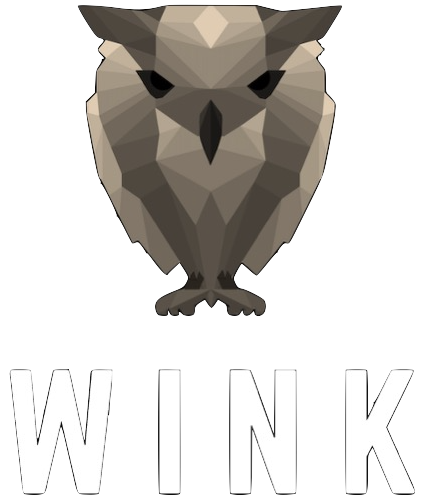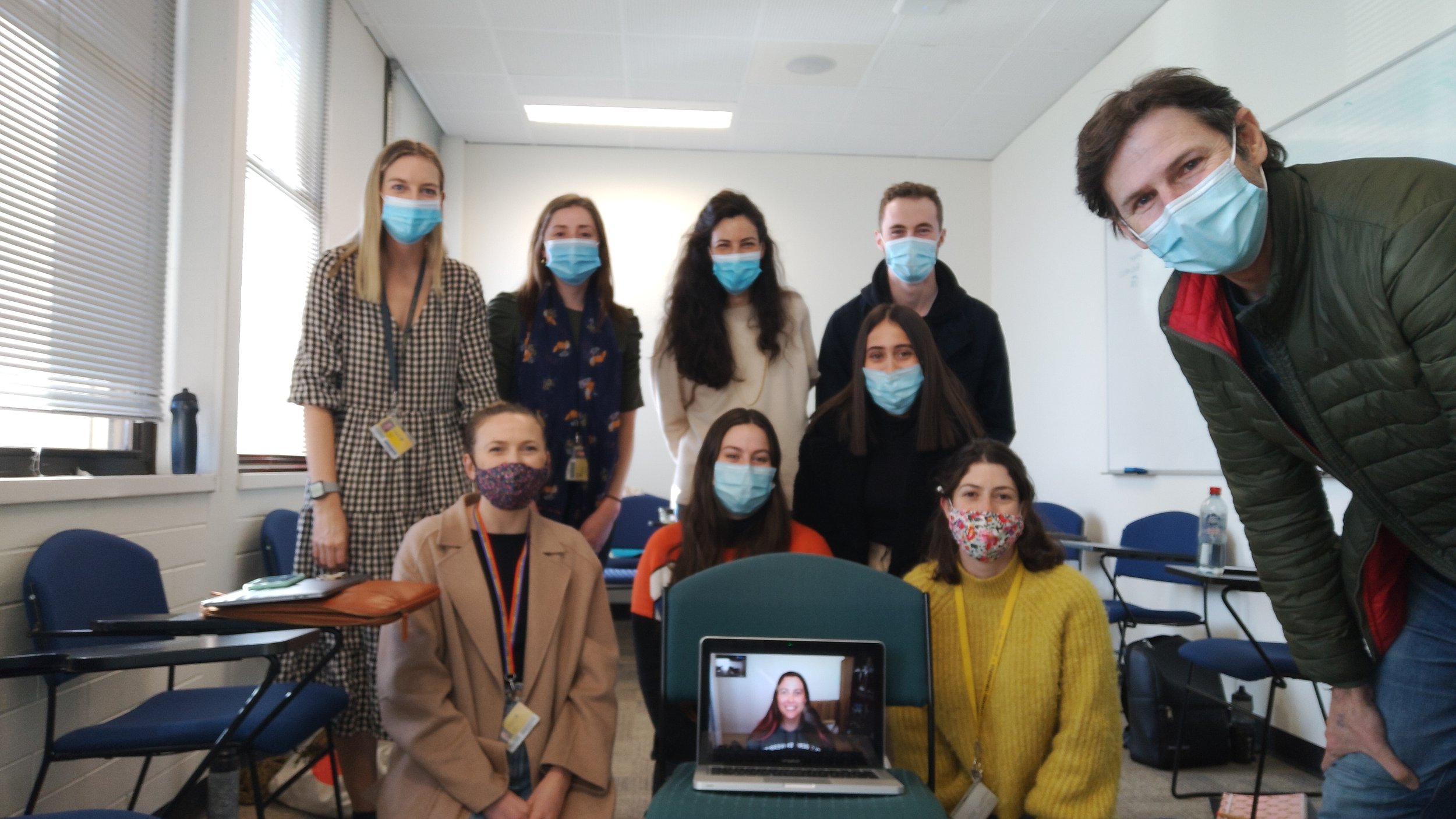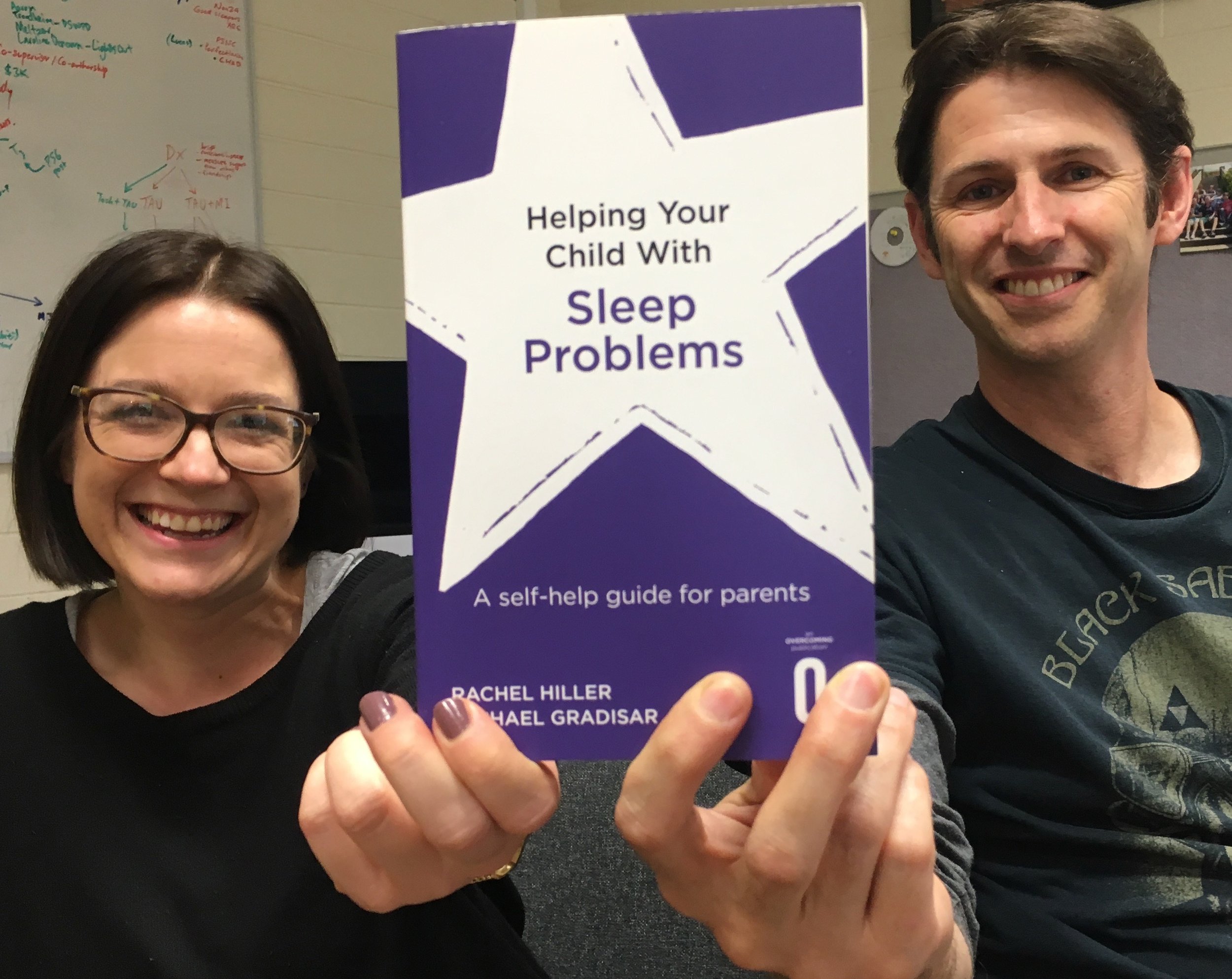#104 - The History of The Child & Adolescent Sleep Clinic - Professor Gradisar
“You Should Do What I Do - But With Sleep.”
That phrase changed my life. It was said by Ron Rapee, a Professor at Macquarie University and Head of the Centre for Emotional Health.
In the month after I started my academic career (circa 2005), Professors Neil Brewer and Tracey Wade sent me to visit the Centre for Emotional Health to learn how a world-class child clinic worked.
Ron’s team were experts at child and adolescent anxiety disorders.
At the end of my first day there, I went to my hotel room, and madly wrote down everything I learned on a clean piece of paper.
It mapped out the beginning of the one of the world’s best child and adolescent sleep clinics …
The start of the Child & Adolescent Sleep Clinic (2006): Back (L-R): Bed; Pillow. Front (L-R): MG.
2006-2010
Ron’s team highlighted that an important foundation of any clinic is space - and Flinders Psychology provided me with a great spot (an office, big group room + 3 consulting rooms) for 1/2 day a week.
The Flinders Uni Child & Adolescent Sleep Clinic was born … actually I had to change its name because if you say its acronym (FUCASC) - it doesn’t sound good (try it - And then imagine saying to families “Welcome to FUCASC”. Am I Right?)
So the Child & Adolescent Sleep Clinic was born (CASC).
Early on I learned from a friend - who got into organisational psychology circles - that “A company’s best asset is its people.”
In the beginning it was me and my former PhD co-supervisor, Dr Helen Wright.
But in 2006, a talented PhD (Clinical Psychology) student joined (Sarah Paine). Sarah co-developed our treatment for school kids’ sleep (more on that later).
The 2008 version of the Child & Adolescent Sleep Clinic, Back (L-R): Karina Starkey; Dr Hayley Dohnt; Dr Sarah Paine. Front (L-R): Ed Weaver; MG; Greg Gardner.
If an academic is honest, they will tell you that Australian PhD students are ‘free research assistants’. But it helps if a clinic can still benefit from funding.
Small and big grants eventually led to the recruitment of other team members - like Annemarie Menne, Dr Amy Slater, Dr Hayley Dohnt and Karina Starkey. We were soon joined by a Masters student, Greg Gardner.
Why am I bothering to list all these names? Well, here’s a hint …
This growing team began developing a reputation around Flinders Psychology. So much so that people wanted to work with us - for free.
So if you cannot obtain funding - the other currency you have is knowledge. And this is something up-and-coming people will trade their time for.
From the outset, we aimed high. Our Child and Adolescent Sleep Clinic began running randomised-controlled trials testing sleep treatments we developed for infants, school kids, and teens.
The 2009 iteration of the Child & Adolescent Sleep Clinic, Back (L-R): Dr Sarah Paine, Karina Starkey. Front (L-R): Dr Hayley Dohnt, Prof Michael Gradisar, Sophie Trenowden.
It was a 5-year journey. Along the way we made national headlines in Print and TV. And our school kid and teen trials were selected as oral presentations (which is harder than it sounds!) at the 2010 European Sleep Research Society conference in Lisbon, Portugal.
Suddenly Australians - and the world’s best pediatric sleep experts - began to notice us.
We must have looked impressive to them. Yet behind the scenes, we ended up struggling for more space as we expanded. Eventually, the Head of our Faculty provided us with a brand spanking new space - including new AudioVisual facilities that helped us train the new generation of pediatric sleep experts.
Our Child & Adolescent Sleep Clinic shed its skin and became bigger and more sophisticated.
The First 50% of the 2010s
In the song with the very long title “Elderly Woman Behind The Counter In A Small Town” - Eddie Vedder sings the line, “I change by not changing at all.”
When you stay at one place for long enough, cohorts of people pass by.
And in the 1st part of the 2010s, the number of people who became part of the Child & Adolescent Sleep Clinic family doubled. So if you wish to expand, a great way is to offer to pass your knowledge onto others (ie, train people).
But there were a number of new ‘1sts’ during this era, including:
We began publishing our clinical trials in scientific journals - as a result, more people in the world began to know who we were, and what we had developed (see Publications at the end of this Blog).
Instead of training up Masters students over a 12-month -period, we trained Clinical PhD students who stuck around for 3-to-4 years.
We learned the value of fun
And after a visit from Dr Leah Brennan from Victoria, we learned that we could change our funding model from ‘Annual grants’ to ‘Medicare funding’.
All of this meant less time continuously training people and seeking funding.
But I guess it also meant more time for my students to prank me (ie, dot point 3) …
The Next 50% of the 2010s
2016 and 2017 were big years for for us - mainly getting the outcomes from our trials known around the world.
It felt a bit like the Child & Adolescent Sleep Clinic was doing a world tour - whether it was at conferences, or visits to a number of Universities.
We learned the importance of getting our work into the big journals, and announcing our work at the big conferences.
But we were still working within the ‘scientific bubble’ - where other scientists were hearing about our work. But the mainstream people were not.
Then came the first big translation of our work - when Rachel Hiller and I signed a book contract …
And we were putting what we learned from CASC into a format for high school classes - which became the first (and still the biggest) influence on teenager’s sleep.
With so much of a focus on school kids and teens, there was one area that was falling behind.
Babies.
And then Dr Michal Kahn arrived - and that all changed.
Our senior members of the 2019 Child & Adolescent Sleep Clinic, (L-R): Dr Michelle Short; Prof Michael Gradisar; Dr Michal Kahn.
She studied under one of the greats - Prof Avi Sadeh. And now we were to benefit from her.
She reminded us that there’s something else besides cognitions and behaviours (aka, emotions).
And like any good symbiosis - she filled our knowledge of treating infant sleep - and she learned how to treat big babies (ie, school kids and teens).
This symbiotic relationship resulted in several scientific publications about infant sleep - many of them about what has happened as a result of COVID-19 (if you wanna know more about this, there’s still time to book into this week’s Live Q&A session with Canadian-based company Sleepout).
The History of The Child & Adolescent Sleep Clinic … (So Far)
I’d like to use a phrase that is used to describe my pug - “A lot in a little”.
On reflection, I really felt like we achieved a lot in a little amount of time at the Child & Adolescent Sleep Clinic. More broadly, I achieved a helluva lot during my academic career.
Flinders University - the Old and the New.
After 29 years at Flinders University I decided this week to resign.
This is by no means a reflection on my Flinders Psychology Family - nor my Sleep Family.
The Flinders that made all of the above happen - and more - is no longer there. Positions with the title ‘People & Culture’ are unfortunately a paradox. Execs are more impressed by their erections (ie, buildings) rather than building up their staff.
I wish my colleagues and the students I taught the very very very best as they enter what will arguably be an incredibly difficult 2022.
But if I wish to continue pushing the envelope - the new Flinders cannot make that happen.
The 2021 iteration of the Child & Adolescent Sleep Clinic, Back (L-R): A fake plant; Meg Pillion; Alex Daniels; Claire Dunbar; Tahlia Cross; Josh Fitton; Dr Chelsea Reynolds; The fake plant’s cousin. Front (L-R): Dr Michal Kahn; Robyn Da Silva; MG; Hannah Whittall; Dr Gorica Micic.
Thus, it is time for CASC to evolve into a new New. We don’t know what that will be. But I do know that it’s the outstanding people who will make this new evolution amazing!
And I hope that some sneak peeks into the History of CASC have given you some ideas of what you can do?
Love + Respect,
Prof MG
UPDATE
The Child & Adolescent Sleep Clinic is now available as an online sleep clinic - servicing the residents of Australia, and selected international clients. Click on the button below to learn more.
p.s. a HUGE thanks to my CASC family over the years. I don’t think it was I who taught you - but all of you who taught me …
Dr Helen Wright; Dr Sarah Paine; Greg Gardner; Annemarie Menne; Dr Amy Slater; Dr Hayley Dohnt; Karina Starkey; Ed Weaver; Sophie Trenowden; Carly; Michele Cooney; Lisa Colton; Dr Mike Oliver; Erin Leahy; Dr Rachel Hiller; Sarah Watherston; Daniel Bonnar; Sebastian Barbero; Jason Gill; Dr Anne-Marie Coughlin; Lynette Moseley; Melissa Willson; Luke Prichard; Dr Lisa Smith; Dr Christin Lang; Dr Kate Bartel; Dr Soph Soph; Dr Jeremy Stevenson; Ashleigh Perry; Danielle Bralo; Nicole Halsey; Lucas Fisher-Horas; Dr Neralie Cain; Dr Cele Richardson; Jordan Maclean; Emma Hunt; Joe Reeks; Dr Michelle Short; Robyn Da Silva; Claire Dunbar; Sophie Rillet; Ellie; Kelsey Stevens; Michelle Tonkin; Tahlia Cross; Melanie Heath; Dr Gorica Micic; Josh Fitton; Benita Rullo; Alex Daniels; Hannah Whittall; Meg Pillion; Dr Chelsea Reynolds; Dr Michal Kahn.
Publications (resulting from the Child & Adolescent Sleep Clinic)
Gradisar, M., Dohnt, H., Gardner, G., Paine, S., Starkey, K., Menne, A., Slater, A., Wright, H., Hudson J.L., Weaver, E., & Trenowden, S. (2011). A randomized controlled trial of cognitive-behavior therapy plus bright light therapy for adolescent Delayed Sleep Phase Disorder. Sleep, 34, 1671-1680.
Paine, S., & Gradisar, M. (2011). A randomised controlled trial of cognitive-behaviour therapy for Behavioural Insomnia of Childhood in school-aged children. Behaviour Research and Therapy, 49, 379-388.
Hiller, R., Lovato, N., Gradisar, M., Oliver, M., & Slater, A. (2014). Trying to fall asleep whilst catastrophising: What sleep-disordered adolescents think and feel. Sleep Medicine, 15, 96-103.
Gradisar, M., Smits, M., Bjorvatn, B. (2014). Assessment and treatment of Delayed Sleep Phase Disorder in adolescents: Recent innovations and cautions. Sleep Medicine Clinics, 9, 199-210.
Gradisar, M., Alfano, C.A., & Harvey, A.G. (2014). A clinician’s quick guide of evidence based approaches: Paediatric sleep disorders. Clinical Psychologist, 18, 133-4.
Whittall H, Pillion M, Gradisar M. (2018). Daytime sleepiness, driving performance, reaction time and inhibitory control during sleep restriction therapy for chronic insomnia disorder. Sleep Medicine, 45, 44-48.
Richardson, C., Cain, N., Bartel, K., Micic, G., Maddock, B., & Gradisar, M. (2018). A randomised controlled trial of bright light therapy and morning activity for adolescents and young adults with Delayed Sleep-Wake Phase Disorder. Sleep Medicine.
Cooney, M., Short, M.A., & Gradisar, M. (2018). An open trial of bedtime fading for sleep disturbances in preschool children: A parent group education approach. Sleep Medicine.
Richardson, C., Micic, G., Cain, N., Bartel, K., Maddock, B., & Gradisar, M. (2018). Cognitive performance in adolescents with Delayed Sleep-Wake Phase Disorder: Treatment effects and a comparison with good sleepers. Journal of Adolescence (Special Issue).
Richardson, C., Micic, G., Cain, N., Bartel, K., Maddock, B., & Gradisar, M. (2019). Cognitive “insomnia’ processes in delayed sleep-wake phase disorder: Do they exist and are they responsive to chronobiological treatment? Journal of Consulting and Clinical Psychology, 87, 16-32.
Micic, G., Richardson, C., Bartel, K., Reynolds, C., Cain, N., Maddock, B., & Gradisar, M. (2019). Readiness to change and commitment as predictors of therapy compliance in adolescents with Delayed Sleep-Wake Phase Disorder. Sleep Medicine, 55, 48-55.
Dewald, J., De Bruin, E., & Gradisar, M. (2019). Cognitive behavior therapy for insomnia (CBT-i) in school-aged children and adolescents. Sleep Medicine Clinics.
Richardson, C., & Gradisar, M. (2021). Depressed mood and repetitive negative thinking in Delayed Sleep-Wake Phase Disorder: Treatment effects and a comparison with good sleepers. Journal of Sleep Research, e13452.
















